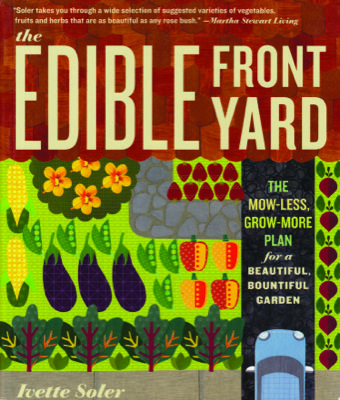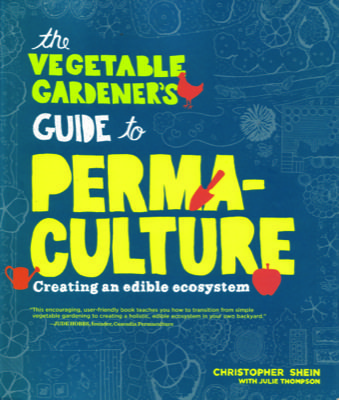Books to help your garden grow.
—by Adele Flail
 The Beautiful Edible Garden: Design a Stylish Outdoor Space Using Vegetables,
The Beautiful Edible Garden: Design a Stylish Outdoor Space Using Vegetables,
Fruits and Herbs
Lisa Bennett and Stefani Bittner
(2013: Ten Speed Press)
If you’re a would-be urban farmer hoping to take your yard away from cobbled-together “salvage-chic,” or a neighborhood pioneer looking for a way to convince dubious family, friends, and neighbors that landscaping can incorporate edible plants and still look polished—this book is for you. The Beautiful Edible Garden covers practices perhaps more frequently applied to interior decorating—such as picking a palette of colors for your garden and creating visual balance. The authors walk you through the five steps that yield delicious fresh foods while making your garden picture-perfect for that unexpected visit from Martha Stewart.
From mapping out permanent garden elements to filling in that last little nook with a pretty groundcover (the throw-pillow of the plant world), Bennett and Bittner also cover basic gardening “best practices,” such as succession planting, intercropping and composting for novice agriculturalists. Aimed at readers from all zones in the US, this book is best paired with a book that covers region-appropriate perennials; if you haven’t already, try Waterwise Plants for Sustainable Gardens by Lauren Springer Ogden and Scott Ogden (Random House) to recoup your water-expenditures on thirsty tomatoes and lettuces.
 The Edible Front Yard: The Mow-Less, Grow-More Plan for a Beautiful Bountiful Garden
The Edible Front Yard: The Mow-Less, Grow-More Plan for a Beautiful Bountiful Garden
Ivette Soler
(2011: Timber Press)
You’ll want this charming book in your collection if you’re looking for ways to incorporate edibles into your landscaping. Like The Beautiful Edible Garden, this book will help you create a landscape that nourishes your body as it delights the senses. Burgeoning and vivacious, Soler’s example gardens are not as polished as the examples provided in Bennett and Bittner’s book—here you’ll find the angular lines of phormiums, agaves and succulents juxtaposed against the rangy and raggedy pea-vines and indeterminate tomatoes that make up the edible landscape backbone—but the gardens in the book have a quirky, fun-loving charm that combines the best of modern and retro stylings.
You also find best practices and design basics, but expect many guides and DIY sidebars, such as building a tri-fold screen that also acts as a trellis, constructing a simple compost cage, and making pepper and garlic spray to control pests. You’ll find bird’s-eye maps of the example gardens, to help you as you map your own, as well as a reference section in the first few chapters that includes not only the usual edible plants, but unusual picks such as paddle cactus, agave and passion flower, that will expand both your palate and palette, and get you revved up for the pretty possibilities for your own plot.
 The Vegetable Gardener’s Guide to Permaculture: Creating an Edible Ecosystem
The Vegetable Gardener’s Guide to Permaculture: Creating an Edible Ecosystem
Christopher Shein with Julie Thompson
(2013: Timber Press)
You’re probably already familiar with the flaws in large-scale agricultural mono-cropping.What if you could create a stable ecosystem in your own backyard vegetable garden? In this book Christopher Shein takes you through the principles of permaculture, explaining how to create “food forests” that act more like natural systems, recycling and reusing nutrients and producing no waste, while increasing your edible yield. The author starts with prepping the soil, for example, using the hugelkulture (German for “mound culture”) method of stacking branches, manure, compost, and other layers to quickly create a rich, decomposing base for your vegetable plants that is like those created by fertile forests and plains over hundreds of years. Readers are also helped to an exploration of their soil and weather, the unique habitat that they must work with to stabilize their own ecosystem, how to put plants together to make them happiest, and finally, how to save and preserve seeds to keep your carefully planned and balanced system going—all while helping you, the reader gain a better understanding for the large-scale and small-scale systems that sustain and nourish life.
